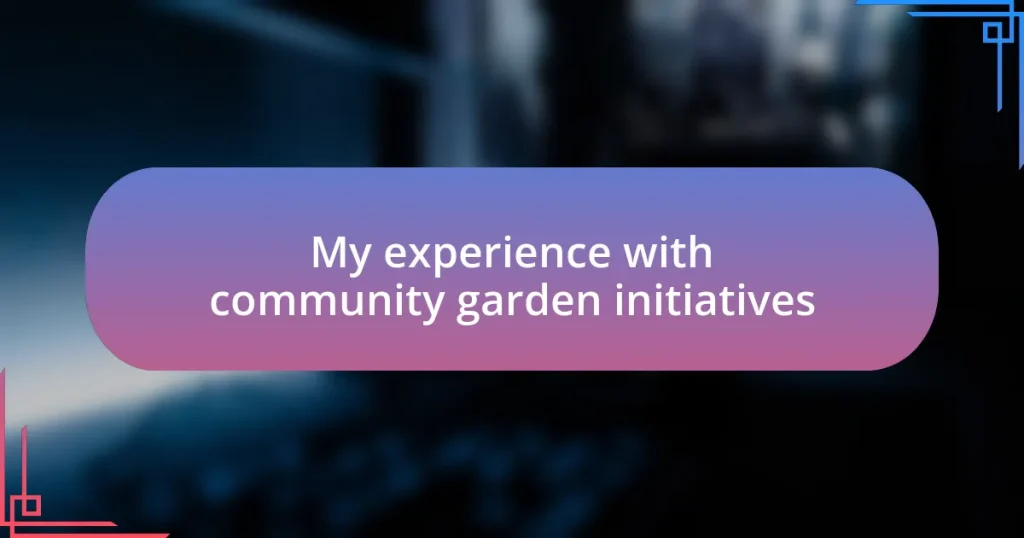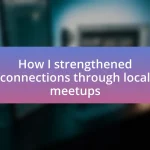Key takeaways:
- Community gardens promote social connections, physical activity, and mental well-being while fostering community ties and identity.
- Finding local community gardens can be done through government websites, social media, and engaging with neighbors.
- Participating in community gardening enhances friendships, offers learning experiences, and encourages collaboration among diverse individuals.
- Challenges like pests and weather difficulties can be overcome through collective problem-solving and open communication among gardeners.
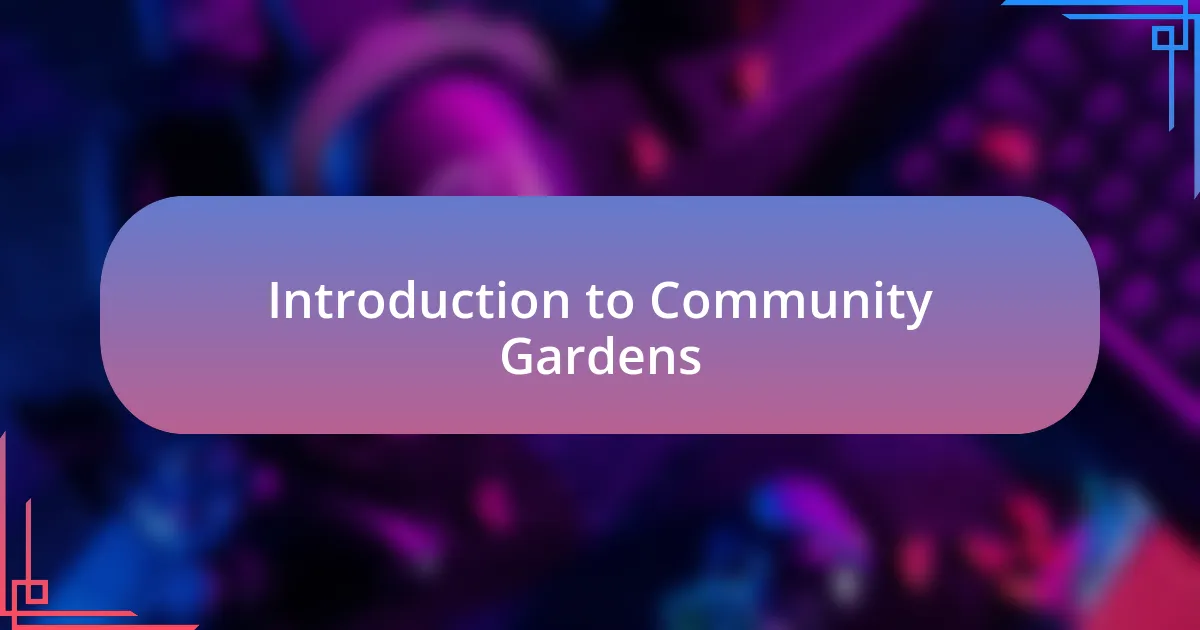
Introduction to Community Gardens
Community gardens are more than just patches of green in urban environments; they serve as vibrant spaces where people come together. I remember my first visit to a local community garden, where a myriad of colors greeted my eyes. It struck me how these gardens foster a sense of belonging, transforming strangers into neighbors working side by side.
As I dug my hands into the soil, I realized that community gardens offer more than just fresh produce. They create opportunities for learning, sharing, and even healing. Have you ever felt the calming effect of tending to a plant? Watching something grow nurtures a profound connection to nature and to one another.
These gardens reflect the unique character of the neighborhoods they inhabit. They can be a canvas for diverse cultures, showcasing everything from traditional herbs to exotic vegetables. Isn’t it fascinating how a simple plot of land can bring such richness to a community’s identity? It’s in these spaces where I’ve seen friendships blossom just as surely as the flowers do.
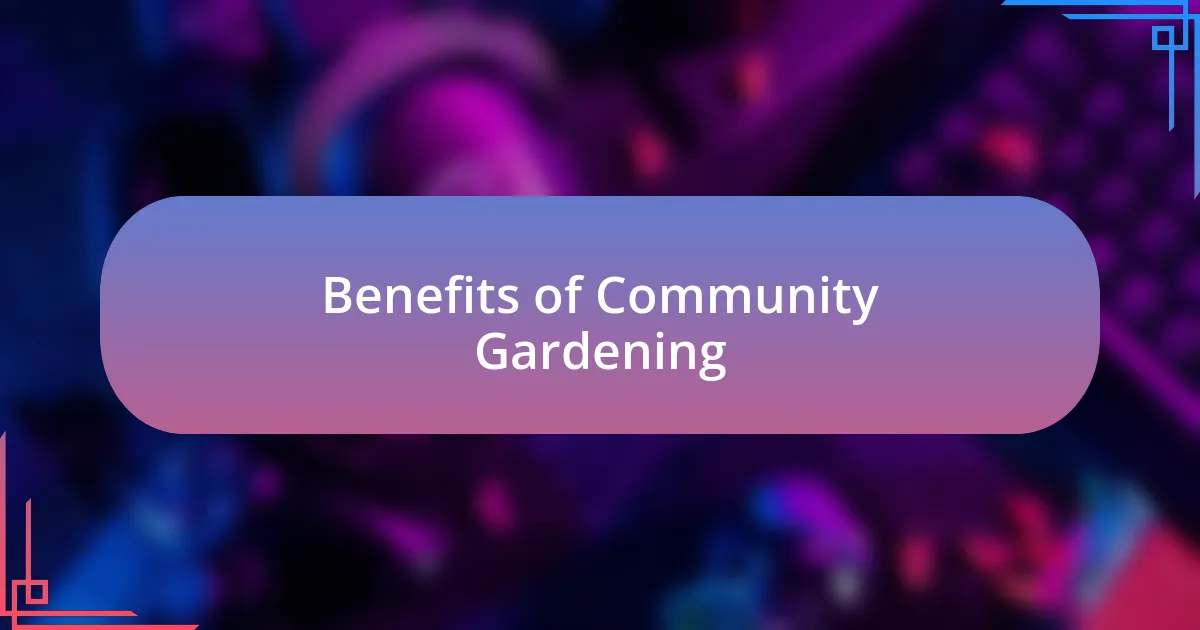
Benefits of Community Gardening
Engaging in community gardening presents a multitude of benefits that extend well beyond simply growing vegetables. From my experience, one of the most impactful advantages is the sense of community it fosters. I vividly remember participating in a weekend planting event where laughter and camaraderie filled the air. It was rewarding not only to cultivate the land together but also to witness friendships form over shared sweat and smiles.
Here are some standout benefits of community gardening:
- Social connection: Creates bonds among participants, turning strangers into friends.
- Physical activity: Offers a fun way to engage in exercise while tending to the garden.
- Mental well-being: Reduces stress and boosts mood through nature interaction.
- Environmental impact: Promotes biodiversity and improves local ecosystems.
- Skill development: Provides opportunities for learning gardening techniques and sustainable practices.
In my view, these aspects strengthen community ties and enhance the quality of life. It amazes me how nurturing a small plot of land can lead to profound transformations in our relationships and mental health.
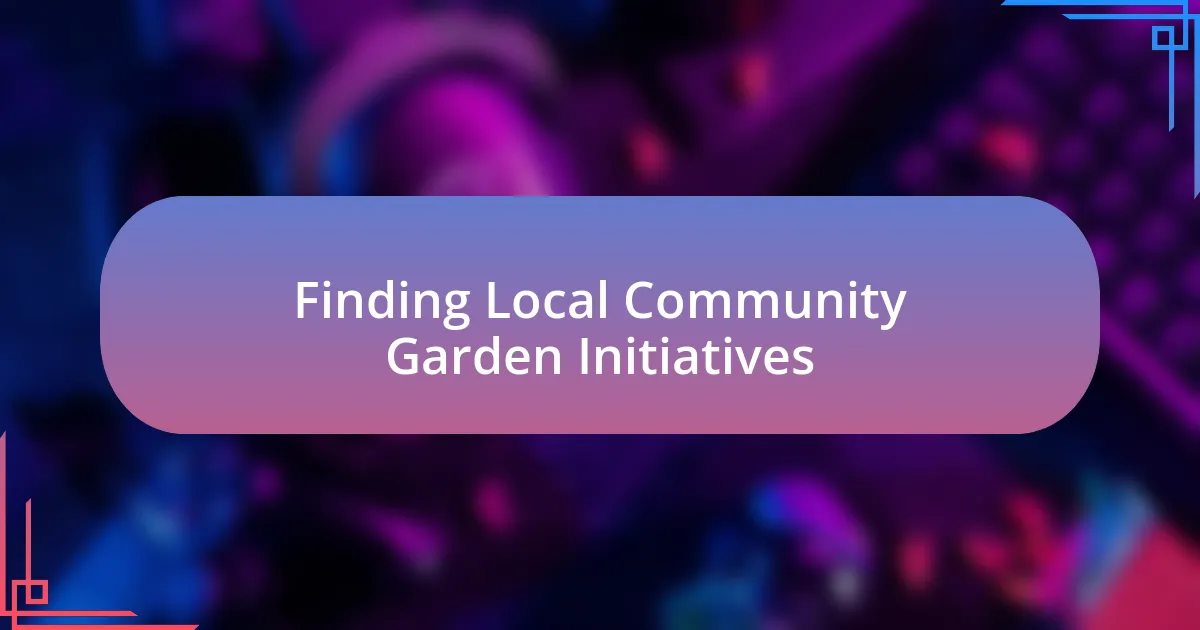
Finding Local Community Garden Initiatives
Finding local community garden initiatives is easier than it might seem. I remember the thrill I felt when I stumbled upon a small local garden through a simple online search. Local government websites and community bulletin boards often list available opportunities, making it a great starting point. Social media groups dedicated to gardening or neighborhood events can also be gold mines for discovering these initiatives.
I’ve also found that talking to neighbors can yield great insights. One day, while chatting with a friend over coffee, she mentioned a community garden just a few blocks away. This led me to join a vibrant group of fellow gardeners who were passionate about sharing knowledge and their harvests. Sometimes, the best opportunities pop up in the most unexpected conversations.
Additionally, local libraries or community centers might host events or workshops related to gardening. I took part in a workshop at my local library that not only taught me about urban gardening but also connected me with a community garden nearby. This experience opened my eyes to how interconnected these initiatives can be and how they often thrive on community involvement.
| Resource Type | Where to Find Them |
|---|---|
| Local Government Websites | Municipal offices typically provide listings of community gardens. |
| Social Media Groups | Platforms like Facebook often have local gardening groups. |
| Community Bulletin Boards | Check libraries or grocery stores for announcements. |
| Neighbors | Conversations can reveal hidden gems in your area. |
| Workshops and Classes | Libraries and community centers often host events related to gardening. |
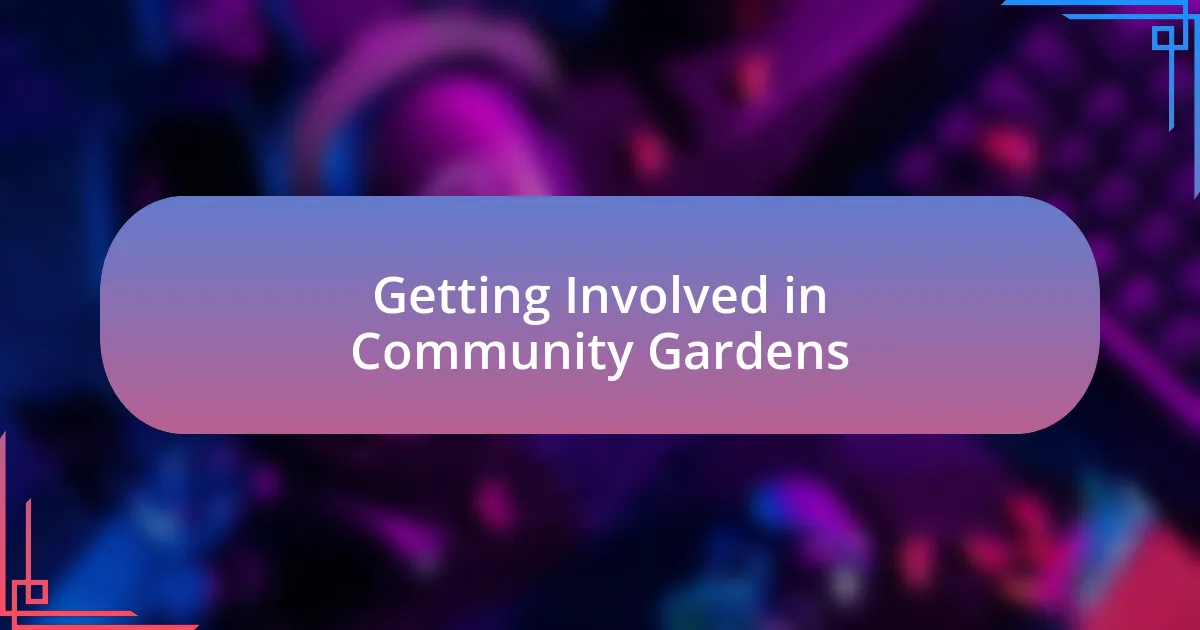
Getting Involved in Community Gardens
Getting involved in community gardens can feel like stepping into a whole new world. I vividly remember my first day in a community garden – the smell of fresh soil and the chatter of familiar faces immediately made me feel at home. It’s amazing how a simple act of sowing seeds can transform not just the land but also the people working together.
One of the most rewarding aspects of participating in community gardens is the friendships that blossom. I’ll never forget the joy of sharing a basket of ripe tomatoes with a neighbor I had just met. The smiles exchanged during those moments reinforced the idea that community gardening is not just about plants; it’s about cultivating connections and creating a supportive environment where everyone thrives together.
Have you ever wondered how your skills might contribute to a community initiative? I often think of my little gardening mishaps – like the time I accidentally planted my cucumbers too close to my squash. Instead of feeling embarrassed, I found that everyone shared their own gardening missteps with laughter. This camaraderie helped me realize that by getting involved, I not only learned from others but also offered my own experiences, enriching the community as a whole.

Growing Together in Shared Spaces
Shared spaces in community gardens can lead to unexpected learning moments and joyful interactions. I recall one sunny afternoon, standing side by side with a group of passionate gardeners, as we dug our hands into the earth. The laughter that flowed while we shared tips on pest control created a bond that extended beyond just our plants; it was a connection rooted in trust and shared purpose.
One experience that stands out in my memory was the planting day where we all brought seeds from our own gardens. As I laid down my heirloom beans next to my neighbor’s sunflowers, I felt a sense of unity. It’s incredible how these small acts of collaboration can transform a patch of land into a vibrant tapestry of diverse flora, each representing unique stories and backgrounds. Have you ever felt that sense of belonging that comes from nurturing something collectively?
The beauty of shared spaces lies in the diverse talents and ideas people bring to the table. I remember organizing a workshop where seasoned gardeners shared their knowledge about organic practices. The enthusiasm around the circle was palpable, and I was reminded of the powerful exchange that occurs when we come together. It’s these moments that truly highlight how growing together cultivates not just food, but a flourishing network of support and friendship.
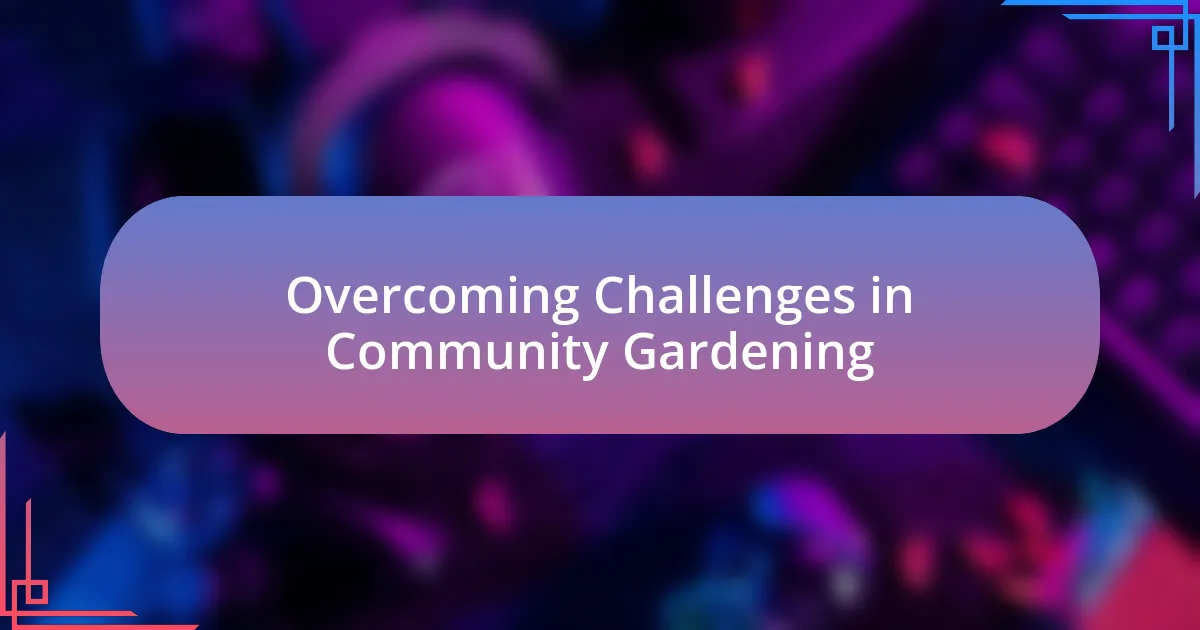
Overcoming Challenges in Community Gardening
Community gardening often comes with its share of challenges, and I’ve faced a few firsthand. I remember one season when we dealt with an unexpected influx of pests. The initial reaction was panic and frustration, but rather than giving up, we decided to hold an emergency meeting. We pooled our ideas and resources, and soon, what felt like a daunting problem turned into an opportunity for collective problem-solving. Have you ever experienced a moment where collaboration turned chaos into clarity?
Weather challenges can be particularly disheartening for any gardener. There was a summer when our plots were parched due to an unusual drought. I vividly recall the worried conversations we had, wondering if our plants would survive. Instead of succumbing to disappointment, we transformed the situation. We organized a community watering schedule and began to think creatively about water conservation techniques, which not only helped our garden thrive but also fostered a sense of resilience within our group. It made me realize how adaptability is key in any gardening endeavor.
Even interpersonal conflicts can arise in community gardens, often stemming from differing gardening philosophies. I once found myself in a heated debate about organic versus conventional practices with a fellow gardener. Initially, it was tense, but once we began to share our experiences and perspectives openly, we unearthed a deeper respect for each other’s methods. Through honest dialogue, we not only resolved our differences but also enriched our gardening practices. How often do we miss out on growth because we shy away from conversation?











